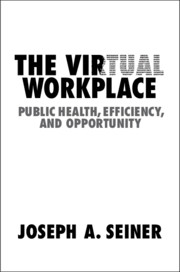Book contents
- The Virtual Workplace
- The Virtual Workplace
- Copyright page
- Dedication
- Contents
- Preface
- Acknowledgments
- 1 Introduction
- 2 Who Is an Employee?
- 3 Pleading Standards and the Technology Sector
- 4 Aggregating Claims
- 5 Collective Bargaining Agreements and Unions in the Modern Economy
- 6 Harassment and the Virtual Workplace
- 7 A Few Final Thoughts
- Appendix Selected Portions of Plaintiff’s Complaint in Bradshaw v. Uber Technologies
- Bibliography
- Index
3 - Pleading Standards and the Technology Sector
Published online by Cambridge University Press: 08 June 2021
- The Virtual Workplace
- The Virtual Workplace
- Copyright page
- Dedication
- Contents
- Preface
- Acknowledgments
- 1 Introduction
- 2 Who Is an Employee?
- 3 Pleading Standards and the Technology Sector
- 4 Aggregating Claims
- 5 Collective Bargaining Agreements and Unions in the Modern Economy
- 6 Harassment and the Virtual Workplace
- 7 A Few Final Thoughts
- Appendix Selected Portions of Plaintiff’s Complaint in Bradshaw v. Uber Technologies
- Bibliography
- Index
Summary
This chapter begins by explaining the pleading requirements of the Federal Rules of Civil Procedure. Next, this chapter explores how Supreme Court caselaw has shaped those rules, emphasizing the Court’s recent decisions in Twombly and Iqbal. Then, this chapter outlines the results of numerous research studies that examine the current state of employment discrimination in our society. Building on this research, this book proposes a unified analytical framework for pleading intent in employment discrimination claims brought under Title VII. The chapter then explains how the proposed pleading model comports with the federal rules, as interpreted by Twombly and Iqbal. The chapter further explores the best approach to pleading claims arising in the technology-sector context.
Keywords
- Type
- Chapter
- Information
- The Virtual WorkplacePublic Health, Efficiency, and Opportunity, pp. 29 - 77Publisher: Cambridge University PressPrint publication year: 2021

